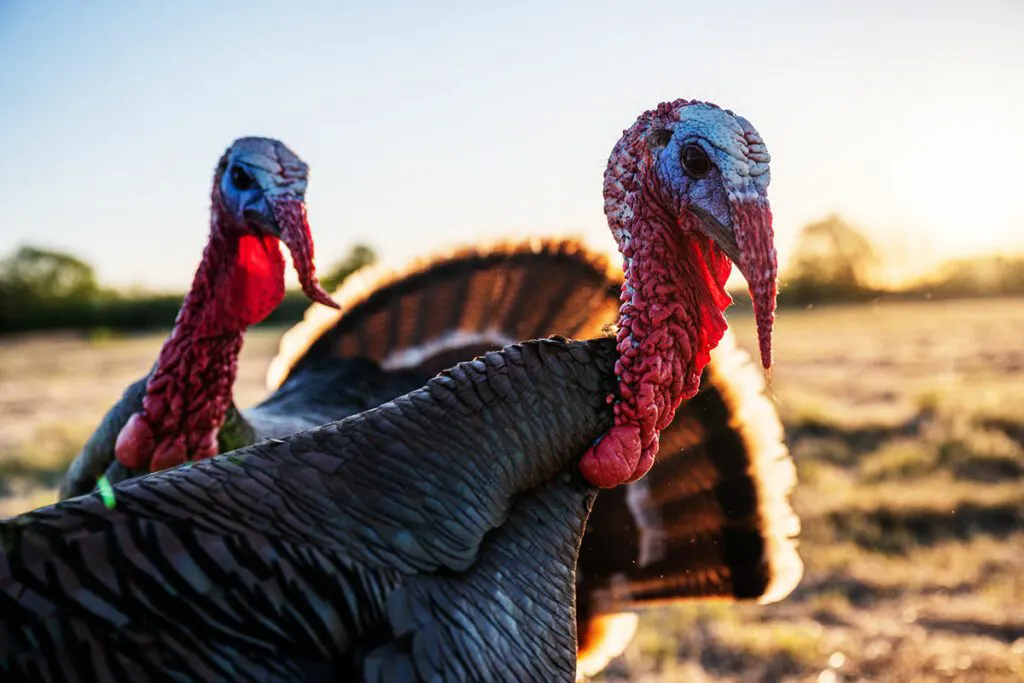
One of the greatest mysteries to perplex the curious language lover during a Thanksgiving dinner is the ubiquitous turkey itself. Some people call them “Turkey”, others call them “India”, “Peru” and some even know them as “Roman”! Seriously, it’s enough to get our feathers in a ruffle! What we call the turkey is a tangled linguistic and geographical mess.
One bird, so many names
The turkey was brought over to the rest of the world from North America, of that there is no doubt. But look at its names in various languages. French speakers call this big, meaty bird dinde, derived from d’Inde (meaning “from India”), Portuguese speakers say peru despite the fact that Peru is in South America, Malaysians call it ayam belanda (Dutch chicken) and Arabs refer to it as the Roman chicken dik rumi (ديك رومي)!
Meanwhile, Turkish speakers call it hindi, from Hindistan, the Turkish name for India! And that’s not all. Polish speakers say indyk while Russians have the similar-sounding индюк (indyuk) – both these words come from “Indian”. Basques have indioilarra, literally, “India rooster” and Castilian Spanish uses pavo, which was originally the Old Spanish word for “peacock”! In Spanish-speaking countries, pavo became so pervasive as the word for “turkey” that the original word for “peacock” was replaced by pavo real (royal turkey) instead!
The Dutch refer to them as kalkoen and variants of this term are found throughout Scandinavia. Kalkoen comes from Calicut-hoen or “hen from Calicut” – a city in Kerala in South India now known as Kozhikode.
North American Origins
First things first. When English explorers set foot in North America, they were of course intrigued by the sight of the strange heavy-set wild birds wandering about. The Englishmen of that period were already familiar with a vaguely similar-looking edible bird from Africa known as the “turkey-cock” – nowadays known as the guinea fowl.
Guinea fowl came from equatorial Africa but were introduced by Turkish merchants to Western Europe – hence the association with Turkey. The early English explorers In North America were quick to name the new species after the familiar turkey-cock, forever bestowing the name “turkey” upon an all-American bird!
What do Indians call them?
With so many languages referring to the turkey as “Indian” or even more specifically, naming them after the Indian city of Calicut / Kozhikode, what do Indians call this wattled, wrinkly-faced bird? In Hindi, a turkey is simply a tarki टर्की while further south in Tamil Nadu the local name is vaankozhi வான்கோழி or “sky chicken”.
Other weird names
Germans dispensed with the incorrect geographical names altogether and refer to them either as Pute or Truthahn perhaps in imitation of the turkey’s call. The Italian tacchino might also be of onomatopoeic origins as early Europeans took notice of the peculiar sounds these strange birds make.
In Asia, some of the more creative names for the humble turkey include huǒ jī 火鸡 (literally, “fire chicken”) in Chinese and shichimenchō七面鳥 or “seven-faced bird” in Japanese. Similarly, Koreans call it chilmyeonjo칠면조also meaning “seven-faced bird” perhaps in reference to the colourful wattles and skin flaps on their faces.
A scientific name straight out of Greek mythology
Finally, the turkey’s scientific name Meleagris gallopavo is just as bizarre as the bird’s other international monikers. Its first name comes from Meleager, an ancient Greek warrior whose mourning sisters, upon his death, were transformed into guinea fowl by the goddess Artemis. The gallopavo part is a combination of the Latin words for “rooster” and “peacock”.
So, there we have it, the poor turkey is a bird so misunderstood that almost every name it has ever been given in scores of languages around the world points to some strange non-existent geographical origins. And to top it off, even its scientific name is a blend of the name of a mythical Greek warrior and the word for “rooster-peacock”!